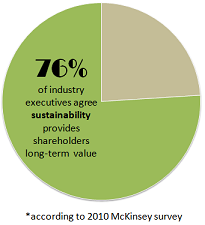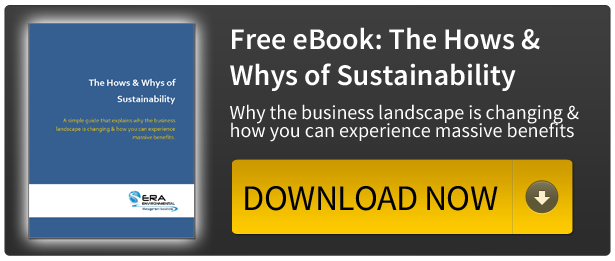.jpg?width=320&name=rrr_blog%20(1).jpg) Everyone knows that the 3 R’s – Reduce, Reuse, Recycle – are the cornerstone of reducing your impact on the environment both at home and in your business. They are an essential part of any corporate sustainability solution. But did you know that incorporating the 3 R’s in to your corporate sustainability management system can save your business time and money? Many companies have adopted corporate sustainability as an essential aspect of their business plans and even made it a core value.
Everyone knows that the 3 R’s – Reduce, Reuse, Recycle – are the cornerstone of reducing your impact on the environment both at home and in your business. They are an essential part of any corporate sustainability solution. But did you know that incorporating the 3 R’s in to your corporate sustainability management system can save your business time and money? Many companies have adopted corporate sustainability as an essential aspect of their business plans and even made it a core value.
Here are just a few ways that the 3 R's can help your business increase its profit while decreasing your environmental impact:
Reduce
Reducing your business’ waste, commonly referred to as waste minimization, doesn’t just reduce your impact on the environment, but also makes your business and manufacturing process more efficient. This often leads to huge savings.
In order to optimize the benefits of waste reduction, you will need to perform a thorough analysis of your material’s cradle-to-grave life cycle.
Having this information and understanding the composition of your waste gives you a clear picture of your process’ waste. This knowledge allows you to keep the number of reject batches to a minimum, optimize how you use your resources, and reduce the use of protective wrappings and enclosures.
By making your manufacturing process more efficient and wasting less, you stand to reduce your operating costs and will often find ways to optimize your product development further. 
Reuse
It is straight forward understanding that if you reuse materials and products, rather than purchasing new amounts, you stand to make financial gains.
Often the most challenging aspect of this for companies is determining what can and cannot be reused. There is often need for lateral thinking, but some surprising reuse has been a boom for some businesses.
Reusing offers small and large businesses an effective method for coping with limited means and resources. Investing in reusable materials could allow your business to save money by replacing many single use products with a single reusable one. Overall, a single reusable product costs less than the total cost of all the single use ones you’d have to buy.
Another common reuse strategy is to employ a “closed loop program” in which you use the same material (for example, reusable transport packaging) throughout the entire transport/manufacturing/shipping cycle. In addition, reusing the scrap metal from your manufacturing process or waste exchanges – using the waste from one process as raw material in another – saves you time, money, resources, and energy.
Recycle
Recycling involves breaking down your used items into their base raw materials and creating new items from them. Recycling reduces your consumption of fresh raw materials and your energy usage. Most importantly, recycling reduces the amount of greenhouse gas emissions, air pollutant emissions, and water pollution released by your business. These are all thing that you need to monitor and disclose.
The U.S. EPA found that recycling efforts reduced the United States’ carbon emissions by 49 million metric tonnes in 2005. There are huge environmental and social benefits associated with these types of reductions, which a savvy business can transform into increased publicity and top-of-mind consumer awareness. Your customers are beginning to expect the use of recycled materials, and some of the most successful businesses have already embraced recycling as an essential part of their production process.
Taking these three steps to make your business more sustainable and reduce your operating costs can be made more simple by using EHS software. Automated reporting, data analysis, and compliance management are all essential tools to reducing waste, reusing whenever possible, and recycling materials.
If your business is investigating the importance of corporate sustainability, download ERA’s free whitepaper “Corporate and Institutional Sustainability”. Inside you will find useful information and case studies to help you understand why corporate sustainability matters, how a sustainability management system will save your company money, and ensure that your business thrives in the future.
Tags:
Sustainability
November 3, 2011

Comments